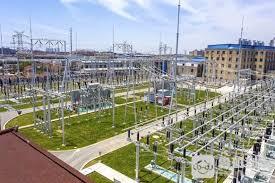Introduction
As the backbone of power transmission and distribution networks, switchyards play a critical role in ensuring the efficient flow of electricity. The advent of advanced technology has revolutionized switchyard testing, enhancing the accuracy, reliability, and efficiency of maintenance and monitoring processes. In this blog post, we will explore the impact of advanced technology on modern switchyard testing and how it contributes to the overall stability and performance of electrical systems.
The Evolution of Switchyard Testing
Switchyard testing has evolved significantly over the years, from basic manual inspections to sophisticated, automated diagnostic techniques. The integration of advanced technology has transformed traditional testing methods, enabling more comprehensive and precise assessments of switchyard components.
Key Advanced Technologies in Switchyard Testing
- Digital Multimeters and Analyzers
Digital multimeters and analyzers provide accurate measurements of electrical parameters, crucial for assessing the health of switchyard components:
- Voltage and Current Measurement: Precise measurement of voltage, current, and resistance.
- Harmonic Analysis: Detection of harmonic distortions that can affect equipment performance.
- Data Logging: Recording of measurement data for trend analysis and predictive maintenance.
- Infrared Thermography
Infrared thermography, or thermal imaging, is a non-invasive technology that detects heat anomalies in electrical components:
- Hotspot Detection: Identification of overheating components that could indicate underlying issues.
- Load Balancing: Monitoring temperature distributions to ensure balanced loads.
- Preventive Maintenance: Early detection of potential failures through thermal patterns.
- Partial Discharge (PD) Monitoring
Partial discharge monitoring detects insulation defects in high-voltage equipment, crucial for preventing electrical failures:
- Online Monitoring: Continuous monitoring of partial discharges in real-time.
- Fault Localization: Accurate identification of the location of insulation defects.
- Predictive Maintenance: Using PD data to plan timely maintenance and prevent breakdowns.
- Frequency Response Analysis (FRA)
Frequency response analysis assesses the mechanical integrity of transformers and other inductive components:
- Winding Deformation Detection: Identifying mechanical deformations in transformer windings.
- Core and Structural Assessment: Evaluating the condition of the transformer core and structural components.
- Post-Event Analysis: Analyzing the impact of mechanical stresses following short circuits or transportation.
- Dissolved Gas Analysis (DGA)
Dissolved gas analysis monitors the condition of transformer oil by analyzing dissolved gases:
- Fault Detection: Identifying overheating, arcing, and other fault conditions.
- Condition Monitoring: Continuous assessment of the health of internal components.
- Maintenance Planning: Providing data for predictive maintenance and timely interventions.
- Automated Circuit Breaker Testing
Automated testing systems for circuit breakers ensure they function correctly during fault conditions:
- Timing Tests: Verifying the opening and closing times of circuit breakers.
- Contact Resistance Measurement: Ensuring low resistance and reliable operation.
- Mechanical Inspections: Automated inspections of mechanical components for wear and tear.
- Smart Sensors and IoT
The integration of smart sensors and Internet of Things (IoT) technology enables real-time monitoring and data collection:
- Continuous Monitoring: Real-time data on temperature, humidity, and other environmental factors.
- Data Analytics: Advanced analytics for identifying trends and anomalies.
- Remote Access: Remote monitoring and diagnostics, reducing the need for on-site inspections.
Benefits of Advanced Technology in Switchyard Testing
- Enhanced Accuracy
Advanced technology provides precise measurements and detailed analysis, reducing the risk of errors and ensuring accurate assessments.
- Improved Reliability
Continuous monitoring and real-time data collection enhance the reliability of switchyard components, preventing unexpected failures.
- Cost-Effective Maintenance
Predictive maintenance based on advanced diagnostics reduces the need for costly emergency repairs and downtime.
- Increased Safety
Early detection of potential issues and automated inspections improve the safety of both personnel and equipment.
- Optimized Performance
Detailed insights and analytics enable fine-tuning of switchyard operations for optimal performance and efficiency.
Conclusion
The integration of advanced technology in modern switchyard testing has revolutionized the way we monitor and maintain critical electrical infrastructure. Digital multimeters, infrared thermography, partial discharge monitoring, frequency response analysis, dissolved gas analysis, automated circuit breaker testing, and smart sensors are just a few examples of how technology is enhancing the accuracy, reliability, and efficiency of switchyard testing. By embracing these advanced diagnostic tools, operators can ensure the stability, performance, and longevity of their switchyard components, contributing to the overall reliability of the power grid.
The Role of Switchyard Repairing in Enhancing the Reliability of 220 kV Networks
Mastering Relay Programming and Configuration: A Comprehensive Guide


